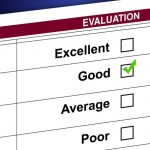Providers should prepare for transitions of care measure
As providers begin working toward meeting stage 2 requirements of the Centers for Medicare and Medicaid Services' meaningful use incentives program, there has been a lot of discussion surrounding possible factors that could keep health care professionals from being successful. By recognizing these factors, providers can aim to avoid them and keep themselves on the right track. Recently, EHRIntelligence spoke to Stephen Beck, M.D., chief medical information officer for Catholic Health Partners, who discussed transitions of care and how they may be something that could derail providers' success if they are not careful.
Beck explained that while he knows that vendors are working to make sure that they have upgraded, certified software in time for stage 2, it can be challenging to train staff to use tools they do not have yet. However, he is very excited about the transitions of care measure part of stage 2. According to Beck, this functionality of EHRs may help doctors deliver better care and make sure that patients are getting the follow-ups they need, improving their satisfaction and ensuring that they transition smoothly from one provider to another.
"Personally, I think [the transitions of care measure] is one of the most important pieces that is in stage 2 but is also the most challenging. We've been working on enrollment with Healtheway – not all organizations have decided to do so, but we felt it was important for us to be a little more aggressive about making that connection – but beyond this are connections with other outside organizations – basically foreign electronic records. We are working with another EHR vendor on a connection to our EHR system. The most challenging part is getting both vendors together to reach the same goal of data exchange; this is a unique challenge in stage 2. In stage 1, as long as your EHR vendor was working hard with you, it was a bit easier to complete everything. Now there are more pieces to the puzzle," Beck told EHRIntelligence.
He added that CHP has already gone through several audits, so they are committed to meeting any for future audits. Beck said that they are training the nursing staff to help with transitions of care. For example, they have created a shared record with educational pieces for both physicians and nurses to make sure that everyone understands what is expected from eligible providers.
Government explains transitions of care importance
HealthIT.gov stated that during stage 2 of meaningful use, once an eligible professional transitions his or her patient to another setting or provider, they should be able to provide a summary of care record for each transition. This summary must be provided using EHR technology.
Any providers who are concerned about whether their systems will have the capabilities they need to achieve this or any other objectives for stage 2 should consider talking with their vendors. The relationship between a provider and a vendor should be an ongoing one, where providers are regularly checking in and communicating about the future of the system as well as any concerns or questions they may have.
A transition of care summary is sometimes known as a discharge summary. HealthIT.gov explained that this document is particularly important because it informs a patient's other providers of information they need to provide efficient care. When providers have the ability to electronically share these documents, it ensures that physicians and nurses get the vital information they need as soon as possible, reducing delays in care as well as medical errors that may have occurred because providers were ill-informed.



